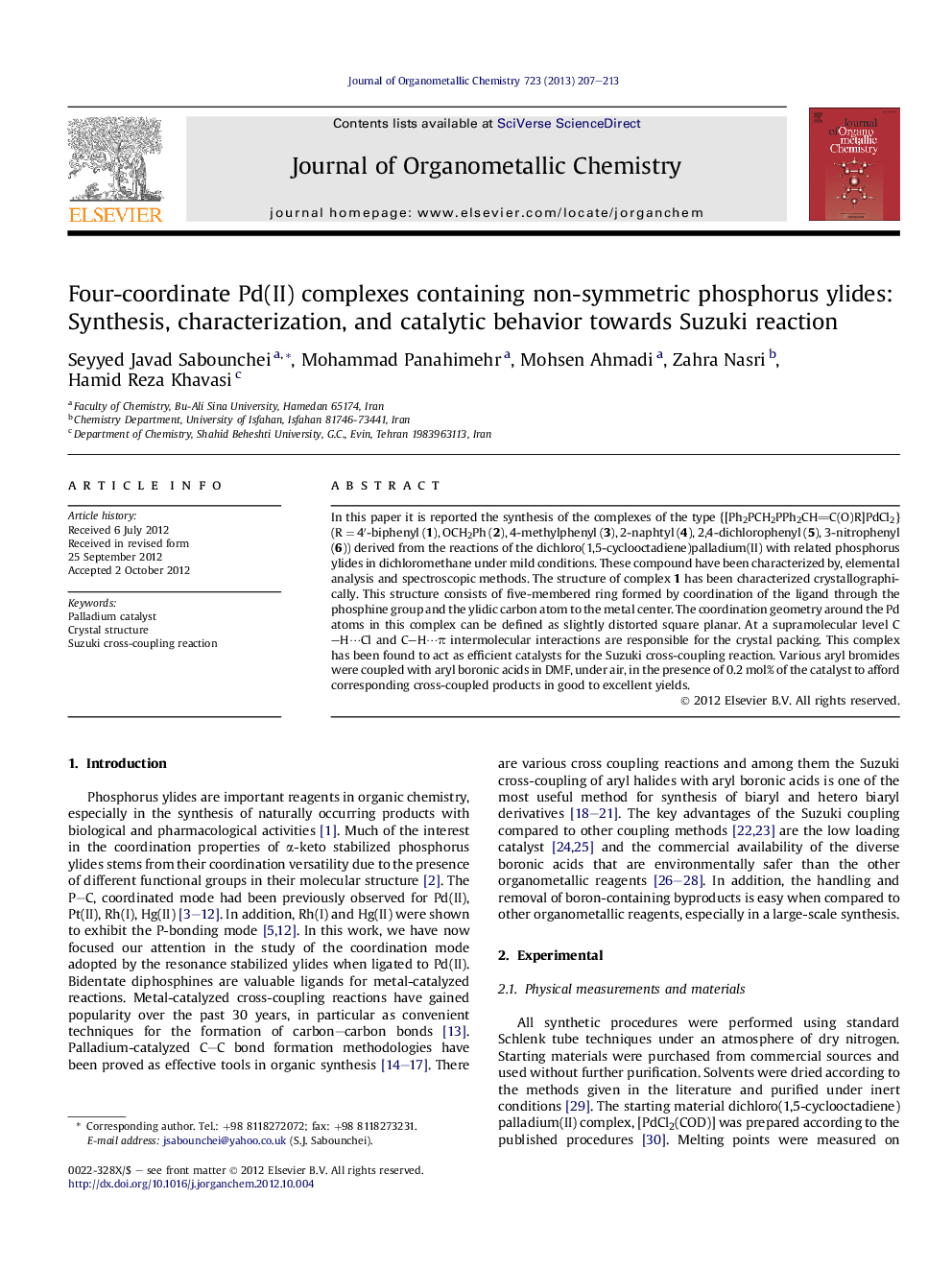| کد مقاله | کد نشریه | سال انتشار | مقاله انگلیسی | نسخه تمام متن |
|---|---|---|---|---|
| 1322971 | 1499915 | 2013 | 7 صفحه PDF | دانلود رایگان |

In this paper it is reported the synthesis of the complexes of the type {[Ph2PCH2PPh2CHC(O)R]PdCl2} (R = 4′-biphenyl (1), OCH2Ph (2), 4-methylphenyl (3), 2-naphtyl (4), 2,4-dichlorophenyl (5), 3-nitrophenyl (6)) derived from the reactions of the dichloro(1,5-cyclooctadiene)palladium(II) with related phosphorus ylides in dichloromethane under mild conditions. These compound have been characterized by, elemental analysis and spectroscopic methods. The structure of complex 1 has been characterized crystallographically. This structure consists of five-membered ring formed by coordination of the ligand through the phosphine group and the ylidic carbon atom to the metal center. The coordination geometry around the Pd atoms in this complex can be defined as slightly distorted square planar. At a supramolecular level C–H⋯Cl and C–H⋯π intermolecular interactions are responsible for the crystal packing. This complex has been found to act as efficient catalysts for the Suzuki cross-coupling reaction. Various aryl bromides were coupled with aryl boronic acids in DMF, under air, in the presence of 0.2 mol% of the catalyst to afford corresponding cross-coupled products in good to excellent yields.
Six palladium(II) complexes, of the type [(Ph2PCH2PPh2CHC(O)R)PdCl2] (R = 4′-biphenyl (1), OCH2Ph (2), 4-methylphenyl (3), 2-naphtyl (4), 2,4-dichlorophenyl (5), 3-nitrophenyl (6)), contain a five-membered P, C-chelated ring were synthesized and investigated by physico-chemical techniques. We used palladium(II) complex (1) as an efficient catalyst for the Suzuki cross-coupling reaction of various aryl halides.Figure optionsDownload as PowerPoint slideHighlights
► Six Pd(II) chelate complexes were synthesized and investigated by physico-chemical techniques.
► 31P NMR can be used to determinate a coordination mode of the ligands.
► The coordination geometry around the Pd atoms in this complex be defined as slightly distorted square planar.
► Efficient palladium catalyzed Suzuki cross-coupling reaction.
Journal: Journal of Organometallic Chemistry - Volume 723, 1 January 2013, Pages 207–213